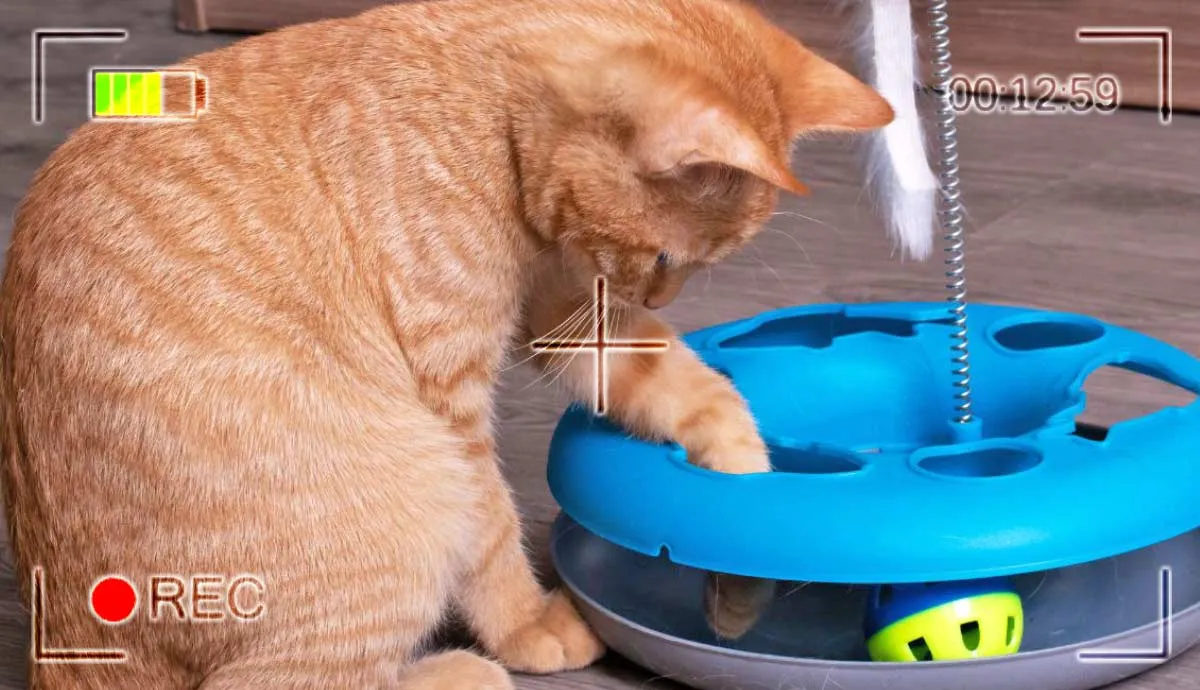I’ve moved into a new home twice since welcoming my cat (his name is Jaxx) into the family, and he was a trooper both times.
I know – I’m one of the lucky ones.
Still, there are definitely some things I wish I had known my first time around that made my second time much smoother, easier, and less hectic for both of us.
To help you avoid the chaos that comes with relocating a cat to a new home, here are some of the things I’ve learned from past experiences.
6. Ease the Transition & Maintain Normalcy

I’m the type of person who starts packing as soon as possible – and I know a lot of you out there are the same way. It makes our lives easier and helps us stay ahead of the curve, but that’s not always the case for cats – in fact, it’s only adding to the stress and anxiety they’re already dealing with.
My general rule of thumb: preparing a cat for moving day should begin weeks, if not months, in advance.
Cats can sense when a major change is happening – and I guarantee you they aren’t too pleased about it. That’s why it’s important to ease them into the transition and maintain normalcy (as best as possible) during this time.
Let them play with boxes before you start packing them up. Avoid making too many major changes at once. Keep their litter, food, and water in their favorite spot – the same goes for their favorite furniture.
Trust me, your cat will appreciate it – and you’ll feel a lot less guilty on moving day!
5. Create a Safe Space While Packing

That brings me to my next point: make sure your cat has a safe space in the days (or weeks) leading up to moving day – especially if movers are entering and exiting the home frequently.
Whether they stay in there all day long or only spend part of their day in there is up to you – based on how comfortable your cat is with the gradual change.
Either way, equip their ‘safe space’ with everything they could possibly need – including food, water, a comfortable spot to nap, toys, treats, and a window (closed, of course) to look at birds. Perhaps most importantly, don’t forget to spend time with them and give them attention whenever possible.
Sometimes, all they need is a little love and reassurance from their mama or papa!
4. Invest in a Spacious & Comfortable Cat Carrier

We’ve established your cat’s safe space while packing, but now let’s discuss their safe space during the transport stage – also known as the cat carrier.
It might not seem like a big deal, but a quality cat carrier makes a huge difference on moving day.
You want one that’s big enough to fit your cat (and a blanket for them to lay on) comfortably, but small enough that you can easily carry it in and out of the house. The more entrances/exits, the better – the same goes for windows (you can always cover these up with a towel if your cat wants privacy).
When moving cats to a new home, make sure they each have their own carrier – no double-stuffing!
Put the cat carrier in your cat’s designated room days, weeks, or even months before moving. Leave the doors open so they can explore the carrier on their own time – and place treats or toys in there to promote positive associations.
3. Anxious Cat? Speak With Your Veterinarian

My cat isn’t a big fan of car rides or cat carriers, but he hasn’t gotten to the point where further action is necessary. I did, however, ask my veterinarian what I should do if things change in the future.
What he said made me feel a lot better about moving day.
For starters, veterinarians often prescribe a mild sedative for overly anxious cats – but only if your cat is healthy enough. NEVER give your feline friend a sedative without first talking with your vet.
If sedatives aren’t an option, don’t worry – there’s more where that came from.
Toys infused with catnip can help ease your cat’s nerves, but I highly recommend looking into synthetic pheromone sprays – such as Feliway Spray or ThunderEase. They mimic your cat’s natural pheromones and help them understand that this is a safe and suitable space for them.
2. Introduce the New Home One Room at a Time

Now you’re moved in, congratulations! This is an exciting time for you and your family, and you probably can’t wait to introduce your feline friend to their new humble abode. But wait, not so fast!
Moving day is already stressful enough, but letting your cat roam free in a new home might add to that stress – making the situation harder on them, and harder on you!
To counter this, I recommend introducing them to the new home one room at a time – starting with the room they would feel most comfortable in (usually a bedroom, or wherever their food and litter are).
I like to go the extra mile and decorate the room as similar as possible to their safe space at the previous home. That way, when you let them out of the carrier, they’ll feel like they never left.
As they grow more comfortable in their safe space, let them venture out and explore what else the new house has in store for them!
1. Keep Them Indoors for Two Weeks Minimum

We’ve made it to the last of my ‘moving with cat’ tips – and it’s perhaps the most important one, especially if your cat tends to run away or sneak outside.
It’s very simple – don’t let your cat wander outdoors for at least two weeks after moving.
That means keeping windows and doors shut at all times and checking for any hidden access points to the garage or outdoors – this is your new home, so check everywhere!
Why is this so important?
Some cats instinctively try to return to their old stomping ground after a stressful move. And while some cats will find their way, others won’t – either way, danger could be lurking on their journey to and from.
If you do plan on letting them loose at some point, at least let them get comfortable with the new home first!





